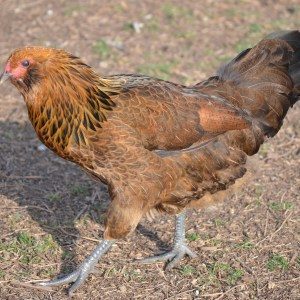Black Australorps
$30.95
A very prolific layer of brown eggs, our Black Australorp started pullets are an excellent homestead chicken.
Description
Black Australorps originated in Australia. They were developed from the Black Orpington. The Black Australorp is one of the best layers of brown eggs. Black Australorps are beautiful birds, and when they are standing in the sun, their black plumage has a lustrous green sheen. They would make a great addition to anyone’s backyard flock! All our chickens are fed a non-GMO feed, and will generally be 15-20 weeks old at the time of arrival.
What color eggs do black Australorps lay?
Black Australorps lay a light brown egg.
What are Black Australorp chickens used for?
Black Australorps are primarily used as productive egg layers. The males can be used as hen protectors and flock regenerators. Both roosters and hens work well in gardens to keep down pests and weed seeds. They can be fenced to a bed that is not in production and allowed to scratch the ground for pests and seeds.
Are Black Australorps aggressive?
Aggression comes in two kinds, towards people and towards other chickens. The hens are typically non-aggression once the normal pecking order is established. Roosters can be aggressive toward other roosters, particularly if there is competition for hens. See how to tame below for hints on how to tame it.
Are Black Australorps good to eat?
Spent hens (hens past their years of laying) are very good to make broth from. The broth is very hardy, and full of nutrients and flavor. The roosters make good fryers if taken young enough, though the black feathers make plucking more of a challenge.
How often do Black Australorps go broody?
Black Australorps occasionally go broody – that is they start to sit on their eggs. It is more a trait of 2-year-olds than 1-year-olds. They are likely to start sitting on a batch of eggs, and then tire of the process and abandon the clutch of eggs before they are hatched.
Do Black Australorps sit on eggs?
On occasion, they will sit on eggs, see the question about broody above. If you want to discourage them from sitting on eggs, collect the eggs daily and early before they have a chance to gather a clutch of eggs together.
Are Black Australorps good mothers?
When a Black Australorp does hatch out a clutch of eggs, they make very good, attention mothers.
Are Black Australorps roosters loud?
Depends on what is loud. They are not nearly as loud as a passing train horn which is a minimum of 96db. Still, they are appropriately loud enough to warn off intruders and give the hens time to find shelter from attacks. Many people find the sound of an early morning rooster to be a welcome change from the electronic alarm clock. Unfortunately, others find the sound annoying.
How do you tame a Black Australorp?
The best way for either hen or rooster is to handle the bird daily. Pick up the bird and hold them securely for a couple of minutes. When first handling the bird, approach slowly and lift them up to waist height. Then position the bird so that the breast of the bird is on your palm, and the bird is facing toward your armpit. I put one leg between my pinky and ring finger and the other leg between the other two fingers. If the bird starts to get overactive, then I put its head under my armpit – the darkness will quiet the bird. With your other hand, you can gently stroke the bird. After a few minutes, gently release the bird.
Are Black Australorps cold hardy?
As one of the heavier breeds, they do well in colder weather. The single comb, useful in warmer clients, is a drawback to a Black Australorp that is in a colder climate. Still, if there is adequate shelter, the Black Australorps do well in cold weather.
Do Black Australorps tolerate heat?
The single comb of the Black Australorp acts as a radiator – giving off heat as the temperature rises. At first appearance, one might think that the black coloring would be hot in the summer, but as you get to know the Black Australorp, you will see that they have a sheen that acts to reflect the heat. All birds need access to fresh water and shade in the heat of summer.





